Black And Decker PS1200 Handleiding
Black And Decker
Boormachine
PS1200
Bekijk gratis de handleiding van Black And Decker PS1200 (7 pagina’s), behorend tot de categorie Boormachine. Deze gids werd als nuttig beoordeeld door 45 mensen en kreeg gemiddeld 4.4 sterren uit 23 reviews. Heb je een vraag over Black And Decker PS1200 of wil je andere gebruikers van dit product iets vragen? Stel een vraag
Pagina 1/7

GENERAL SAFETY RULES - FOR ALL BATTERY OPERATED TOOLS
WARNING! READ AND UNDERSTAND ALL INSTRUCTIONS. Failure to follow all
instructions listed below, may result in electric shock, fire and/or serious personal injury
SAVE THESE INSTRUCTIONS
WORK AREA
•Keep your work area clean and well lit. Cluttered benches and dark areas invite accidents.
• Do not operate power tools in explosive atmospheres, such as in the presence of
flammable liquids, gases, or dust. Power tools create sparks which may ignite the dust or
fumes.
• Keep bystanders, children, and visitors away while operating a power tool.
Distractions can cause you to lose control.
ELECTRICAL SAFETY
• Do not abuse the cord. Never use the cord to carry the tool. Keep cord away from
heat, oil, sharp edges or moving parts. Replace damaged cords immediately.
Damaged cords may create a fire.
• A battery operated tool with integral batteries or a separate battery pack must be
recharged only with the specified charger for the battery. A charger that may be suitable
for one type of battery may create a risk of fire when used with another battery.
• Use battery operated tool only with specifically designated battery pack. Use of any
other batteries may create a risk of fire.
PERSONAL SAFETY
• Stay alert, watch what you are doing and use common sense when operating a power
tool. Do not use tool while tired or under the influence of drugs, alcohol, or
medication. A moment of inattention while operating power tools may result in serious
personal injury,
• Dress properly. Do not wear loose clothing or jewelry. Contain long hair. Keep your
hair, clothing , and gloves away from moving parts. Loose clothes, jewelry, or long hair
can be caught in moving parts. Air vents cover moving parts and should be avoided.
• Avoid accidental starting. Be sure switch is in the locked or off position before
inserting battery pack. Carrying tools with your finger on the switch or inserting the battery
pack into a tool with the switch on invites accidents.
• Remove adjusting keys or wrenches before turning the tool on. A wrench or a key that
is left attached to a rotating part of the tool may result in personal injury.
• Do not overreach. Keep proper footing and balance at all times. Proper footing and
balance enable better control of the tool in unexpected situations.
• Use safety equipment. Always wear eye protection. Dust mask, non-skid safety shoes,
hard hat, or hearing protection must be used for appropriate conditions.
TOOL USE AND CARE
• Use clamps or other practical way to secure and support the workpiece to a stable
platform. Holding the work by hand or against your body is unstable and may lead to loss of
control.
• Do not force tool. Use the correct tool for your application. The correct tool will do the
job better and safer at the rate for which it is designed.
• Do not use tool if switch does not turn it on or off. A tool that cannot be controlled with
the switch is dangerous and must be repaired.
• Disconnect battery pack from tool or place the switch in the locked or off position
before making any adjustments, changing accessories, or storing the tool. Such
preventative safety measures reduce the risk of starting the tool accidentally.
• Store idle tools out of reach of children and other untrained persons. Tools are
dangerous in the hands of untrained users.
• When battery pack is not in use, keep it away from other metal objects like: paper
clips, coins, keys, nails, screws or other small metal objects that can make a
connection from one terminal to another. Shorting the battery terminals together may
cause sparks, burns, or a fire.
• Maintain tools with care. Keep cutting tools sharp and clean. Properly maintained tools,
with sharp cutting edge are less likely to bind and are easier to control.
• Check for misalignment or binding of moving parts, breakage of parts, and any other
condition that may affect the tool’s operation. If damaged, have the tool serviced
before using. Many accidents are caused by poorly maintained tools.
VEA EL ESPAÑOL EN LA CONTRAPORTADA.
SAVE THIS MANUAL FOR FUTURE REFERENCE.
INSTRUCTIVO DE OPERACIÓN, CENTROS DE SERVICIO Y PÓLIZA DE GARANTÍA.
ADVERTENCIA: LÉASE ESTE INSTRUCTIVO ANTES DE USAR EL PRODUCTO.
INSTRUCTION MANUAL
Catalog No. PS1200, PS1440,
PS1800, PSO1800
1
1
1
1
1
1
1
1
1
12
2
2
2
2
2
2
2
2
2,
,
,
,
,
,
,
,
,
,
1
1
1
1
1
1
1
1
1
14
4
4
4
4
4
4
4
4
4,
,
,
,
,
,
,
,
,
,
1
1
1
1
1
1
1
1
1
18
8
8
8
8
8
8
8
8
8
V
V
V
V
V
V
V
V
V
Vo
o
o
o
o
o
o
o
o
ol
l
l
l
l
l
l
l
l
lt
t
t
t
t
t
t
t
t
t
C
C
C
C
C
C
C
C
C
Co
o
o
o
o
o
o
o
o
or
r
r
r
r
r
r
r
r
rd
d
d
d
d
d
d
d
d
dl
l
l
l
l
l
l
l
l
le
e
e
e
e
e
e
e
e
es
s
s
s
s
s
s
s
s
ss
s
s
s
s
s
s
s
s
s
D
D
D
D
D
D
D
D
D
Dr
r
r
r
r
r
r
r
r
ri
i
i
i
i
i
i
i
i
il
l
l
l
l
l
l
l
l
ll
l
l
l
l
l
l
l
l
ls
s
s
s
s
s
s
s
s
s
Cat. No.PS1200, PS1440, PS1800, PSO1800 Form # 90532472
Copyright © 2008 Black & Decker March 2008 Printed in China
• Use only accessories that are recommended by the manufacturer for your model.
Accessories that may be suitable for one tool may create a risk of injury when used on
another tool.
SERVICE
• Tool service must be performed only by qualified repair personnel. Service or
maintenance performed by unqualified personnel may result in a risk of injury.
• When servicing a tool, use only identical replacement parts. Follow instructions in
the Maintenance section of this manual. Use of unauthorized parts or failure to follow
Maintenance Instructions may create a risk of shock or injury.
SPECIFIC SAFETY RULES
• Hold tool by insulated gripping surfaces when performing an operation where the
cutting tool may contact hidden wiring or its own cord. Contact with a "live" wire will
also make exposed metal parts of the tool "live" and shock the operator.
• When working on a ladder or on scaffolding be sure to lay the tool down on its side
when not in use. Some tools with large battery packs will stand upright but may be easily
knocked over.
WARNING: Some dust created by power sanding, sawing, grinding, drilling, and
other construction activities contains chemicals known to the State of California to
cause cancer, birth defects or other reproductive harm. Some examples of these
chemicals are:
• lead from lead-based paints,
• crystalline silica from bricks and cement and other masonry products, and
• arsenic and chromium from chemically-treated lumber.
Your risk from these exposures varies, depending on how often you do this type of work. To
reduce your exposure to these chemicals: work in a well ventilated area, and work with
approved safety equipment, such as those dust masks that are specially designed to filter
out microscopic particles.
•Avoid prolonged contact with dust from power sanding, sawing, grinding, drilling,
and other construction activities. Wear protective clothing and wash exposed areas
with soap and water. Allowing dust to get into your mouth, eyes, or lay on the skin may
promote absorption of harmful chemicals.
WARNING: Use of this tool can generate and/or disperse dust, which may cause serious
and permanent respiratory or other injury. Always use NIOSH/OSHA approved respiratory
protection appropriate for the dust exposure. Direct particles away from face and body.
SAFETY GUIDELINES - DEFINITIONS
It is important for you to read and understand this manual.
The information it contains relates to protecting YOUR SAFETY and PREVENTING
PROBLEMS. The symbols below are used to help you recognize this information.
DANGER: Indicates an imminently hazardous situation which, if not avoided, will result
in death or serious injury.
WARNING: Indicates a potentially hazardous situation which, if not avoided, could
result in death or serious injury.
CAUTION: Indicates a potentially hazardous situation which, if not avoided, may result
in minor or moderate injury.
CAUTION: Used without the safety alert symbol indicates a potentially hazardous situation
which, if not avoided, may result in property damage
Symbols
The label on your tool may include the following symbols.
V ..........................volts A..........................amperes
Hz ........................hertz W ........................watts
min ........................minutes ......................alternating current
......................direct current no ........................no load speed
.......................... Class II Construction ........................earthing terminal
........................safety alert symbol .../min ..................revolutions or
reciprocations per minute
Battery Cap Information
Battery storage and carrying caps are provided for use whenever the battery is out of the tool
or charger. Remove cap before placing battery in charger or tool.
WARNING: Do not store or carry battery so that metal objects can contact exposed battery
terminals. For example, do not place battery in aprons, pockets, tool boxes, product kit
boxes, drawers, etc. with loose nails, screws, keys, etc. without battery cap. Transporting
batteries can possibly cause fires if the battery terminals inadvertently come in contact with
conductive materials such as keys, coins, hand tools and the like. The US Department of
Transportation Hazardous Material Regulations (HMR) actually prohibit transporting
batteries in commerce or on airplanes (i.e. packed in suitcases and carryon luggage)
UNLESS they are properly protected from short circuits. So when transporting individual
batteries, make sure that the battery terminals are protected and well insulated from
materials that could contact them and cause a short circuit.
3
1 2
Battery Cap
K
K
K
K
K
K
K
K
K
KE
E
E
E
E
E
E
E
E
EY
Y
Y
Y
Y
Y
Y
Y
Y
YI
I
I
I
I
I
I
I
I
IN
N
N
N
N
N
N
N
N
NF
F
F
F
F
F
F
F
F
FO
O
O
O
O
O
O
O
O
OR
R
R
R
R
R
R
R
R
RM
M
M
M
M
M
M
M
M
MA
A
A
A
A
A
A
A
A
AT
T
T
T
T
T
T
T
T
TI
I
I
I
I
I
I
I
I
IO
O
O
O
O
O
O
O
O
ON
N
N
N
N
N
N
N
N
NY
Y
Y
Y
Y
Y
Y
Y
Y
YO
O
O
O
O
O
O
O
O
OU
U
U
U
U
U
U
U
U
US
S
S
S
S
S
S
S
S
SH
H
H
H
H
H
H
H
H
HO
O
O
O
O
O
O
O
O
OU
U
U
U
U
U
U
U
U
UL
L
L
L
L
L
L
L
L
LD
D
D
D
D
D
D
D
D
DK
K
K
K
K
K
K
K
K
KN
N
N
N
N
N
N
N
N
NO
O
O
O
O
O
O
O
O
OW
W
W
W
W
W
W
W
W
W:
:
:
:
:
:
:
:
:
:
•Charge battery for 9 hours before first use. For more information see
“CHARGING THE POWER PACK”.
BEFORE RETURNING THIS PRODUCT
FOR ANY REASON PLEASE CALL
1-800-544-6986
BEFORE YOU CALL, HAVE THE CATALOG No. AND DATE CODE AVAILABLE. IN MOST CASES, A
BLACK & DECKER REPRESENTATIVE CAN RESOLVE THE PROBLEM OVER THE PHONE. IF YOU
HAVE A SUGGESTION OR COMMENT, GIVE US A CALL. YOUR FEEDBACK IS VITAL TO
BLACK & DECKER.
T
THANK
HANK YOU
YOU FOR
FOR CHOOSING
CHOOSING B
BLACK
LACK &
&D
DECKER
ECKER!
!
G
GO
OT
TO
OWWW
WWW.B
.BLACKAND
LACKANDD
DECKER
ECKER .
.COM
COM /N
/NEW
EWO
OWNER
WNER
T
TO
OREGISTER
REGISTER YOUR
YOUR NEW
NEW PRODUCT
PRODUCT.
.

7. The power pack will reach optimum performance after being cycled 5 times during
normal usage. There is no need to run the batteries down completely before recharging.
Normal usage is the best method of discharging and recharging the batteries.
Safety Warnings and Instructions: Drills
1. Hold drill firmly to control the twisting action of the drill. See Figure 3.
2. When attaching accessories in the drill chuck, hand tighten the keyless chuck firmly.
WARNING: Drill may stall (if overloaded or improperly used) causing a twist. Always
expect the stall. Grip the drill firmly to control the twisting action (see Fig. 3) and prevent loss
of control which could cause personal injury. If a stall does occur, release the trigger
immediately and determine the reason for the stall before re-starting.
Operating Instructions
TRIGGER SWITCH & REVERSING BUTTON (FIGURE 4)
The drill is turned ON and OFF by pulling and releasing the trigger switch shown in Figure 4.
The farther the trigger is depressed, the higher the speed of the drill. A forward/reverse
control button determines the direction of the tool and also serves as a lock off button. To
select forward rotation, release the trigger switch and depress the forward/reverse control
button. To select reverse, depress the forward/reverse control button the opposite direction.
The center position of the control button locks the tool in the off position. When changing the
position of the control button, be sure the trigger is released.
TORQUE CONTROL (FIGURE 5)
This tool is fitted with a collar to select the operating mode and to set the torque for
tightening screws. Large screws and hard workpiece materials require a higher torque
setting than small screws and soft workpiece materials.
• For drilling in wood, metal and plastics, set the collar to the drilling position symbol .
• For screwdriving, set the collar to the desired setting. If you do not yet know the
appropriate setting, proceed as follows:
• Set the collar to the lowest torque setting.
• Tighten the first screw.
• If the clutch ratchets before the desired result is achieved, increase the collar setting and
continue tightening the screw. Repeat until you reach the correct setting. Use this setting
for the remaining screws.
KEYLESS CHUCK (FIGURE 6)
To insert a drill bit or other accessory:
1. Grasp the rear half of the chuck with one hand and use your other hand to rotate the
front half in the counterclockwise direction, as viewed from the chuck end.
2. Insert the bit or other accessory fully into the chuck, and tighten securely by holding the
rear half of the chuck and rotating the front portion in the clockwise direction as viewed
from the chuck end.
WARNING: Do not attempt to tighten drill bits (or any other accessory) by gripping the
front part of the chuck and turning the tool on. Damage to the chuck and personal injury may
occur when changing accessories.
SCREW DRIVING
For driving fasteners, the reversing button should be pushed to the left. Use reverse (button
pushed to the right) for removing fasteners. When moving from forward to reverse, or vice
versa, always release the trigger switch first.
ON BOARD BIT STORAGE
A bit storage slot is built-in to the area just above the battery. Use the magnetic bit tip holder
in conjunction with the 1 inch bit tips stored in the removable rubber cap on the end of the drill.
DRILLING
• Use sharp drill bits only.
• Support and secure work properly, as instructed in the Safety Instructions.
• Use appropriate and required safety equipment, as instructed in the Safety Instructions.
• Secure and maintain work area, as instructed in the Safety Instructions.
• Run the drill very slowly, using light pressure, until the hole is started enough to keep the
drill bit from slipping out of it.
• Apply pressure in a straight line with the bit. Use enough pressure to keep the bit biting but
not so much as to stall the motor or deflect the bit.
• Hold the drill firmly with two hands to control its twisting action.
• DO NOT CLICK THE TRIGGER OF A STALLED DRILL OFF AND ON IN AN ATTEMPT TO
START IT. DAMAGE TO THE DRILL CAN RESULT.
• Minimize stalling on breakthrough by reducing pressure and slowly drilling through the last
part of the hole.
• Keep the motor running while pulling the bit out of a drilled hole. This will help reduce jamming.
•Make sure switch turns drill on and off.
WARNING: It is important to support the work properly and to hold the drill firmly to
prevent loss of control (figure 3) which could cause personal injury. If you have any
questions on how to properly operate tool, call: 1-800-544-6986.
DRILLING IN WOOD
Holes in wood can be made with the same twist drill bits used for metal or with spade bits.
These bits should be sharp and should be pulled out frequently when drilling to clear chips
from the flutes.
DRILLING IN METAL
Use a cutting lubricant when drilling metals. The exceptions are cast iron and brass which
should be drilled dry. The cutting lubricants that work best are sulfurized cutting oil or lard oil.
DRILLING IN MASONRY
Use carbide tipped masonry bits. Refer to Drilling section. Keep even force on the drill but
not so much that you crack the brittle material. A smooth, even flow of dust indicates the
proper drilling rate.
Maintenance
Use only mild soap and damp cloth to clean the tool. Never let any liquid get inside the tool;
never immerse any part of the tool into a liquid
IMPORTANT: To assure product SAFETY and RELIABILITY, repairs, maintenance and
adjustment (other than those listed in this manual) should be performed by authorized service
centers or other qualified service organizations, always using identical replacement parts.
The RBRC™ Seal
The RBRC™ (Rechargeable Battery Recycling Corporation)
Seal on the nickel-cadmium battery (or battery pack) indicates that the costs to
recycle the battery (or battery pack) at the end of its useful life have already been
paid by Black & Decker. In some areas, it is illegal to place spent nickel-cadmium
batteries in the trash or municipal solid waste stream and the RBRC program provides an
environmentally conscious alternative.
RBRC in cooperation with Black & Decker and other battery users, has established
programs in the United States and Canada to facilitate the collection of spent nickel-
cadmium batteries. Help protect our environment and conserve natural resources by
returning the spent nickel-cadmium battery to an authorized Black & Decker service center
or to your local retailer for recycling. You may also contact your local recycling center for
information on where to drop off the spent battery, or call 1-800-8-BATTERY.
Safety Warnings and Instructions: Charging the Drill
1. This manual contains important safety and operating instructions.
2. Before using battery charger, read all instructions and cautionary markings on (1)
battery charger, (2) battery, and (3) product using battery.
3. CAUTION: To reduce the risk of injury, charge only Black & Decker Power Packs.
Other types of batteries may burst causing personal injury and damage.
4. Do not expose charger to rain or snow.
5. Use of an attachment not recommended or sold by Black & Decker may result in a risk
of fire, electric shock, or injury to persons.
6. To reduce risk of damage to electric plug and cord, pull by plug rather than cord when
disconnecting charger.
7. Make sure cord is located so that it will not be stepped on, tripped over, or otherwise
subjected to damage or stress.
8. An extension cord should not be used unless absolutely necessary. Use of improper
extension cord could result in a risk of fire, electric shock or electrocution.
a. Two-wire cords can be used with 2-wire or 3-wire extension cords. Only round jacketed
extension cords should be used, and we recommend that they be listed by Underwriters
Laboratories (U.L.). If the extension is to be used outside, the cord must be suitable for
outdoor use. Any cord marked for outdoor use can also be used for indoor work. The
letters "W" or "WA" on the cord jacket indicate that the cord is suitable for outdoor use.
b. An extension cord must have adequate wire size (AWG or American Wire Gauge) for
safety, and to prevent loss of power and overheating. The smaller the gauge number of
the wire, the greater the capacity of the cable; that is, 16 gauge has more capacity than
18 gauge. When using more than one extension to make up the total length, be sure
each extension contains at least the minimum wire size.
CHART FOR MINIMUM WIRE SIZE (AWG)OF EXTENSION CORDS
NAMEPLATE RATING AMPS – 0 – 10.0
Total Extension Cord Length (ft) 25 50 75 100 125 150
Wire Gauge 18 18 16 16 14 14
9. Use only the supplied charger when charging your drill. The use of any other charger
could damage the drill or create a hazardous condition.
10. Use only one charger when charging.
11. Do not attempt to open the charger or the drill. There are no customer serviceable parts
inside. Return to any authorized Black & Decker service center.
12. DO NOT incinerate the drill or battery packs even if they are severely damaged or
completely worn out. The batteries can explode in a fire.
13. Do not incinerate the batteries. They can explode in a fire. A small leakage of liquid from
the battery cells may occur under extreme usage, charging or temperature
conditions. This does not indicate a failure. However, if the outer seal is broken and this
leakage gets on your skin:
a. Wash quickly with soap and water.
b. Neutralize with a mild acid such as lemon juice or vinegar.
c. If the battery liquid gets in your eyes, flush them with clean water for a minimum of 10
minutes and seek immediate medical attention. The liquid is a MEDICAL NOTE:
25-35% solution of potassium hydroxide.
Charging the Power Pack
THE BATTERIES IN YOUR POWER PACK ARE NOT FULLY CHARGED AT THE
FACTORY. BEFORE ATTEMPTING TO CHARGE THEM, THOROUGHLY READ ALL OF
THE SAFETY INSTRUCTIONS.
The charger is designed to use standard household 120 volt 60 Hz power.
1. Plug the charger into any standard 120 Volt 60 Hz electrical outlet.
2. Slide the charger onto the battery pack as shown in Figure 1 and let the battery charge
initially for . After the initial charge, under normal usage, your power pack should9 hours
be fully charged in 3 to 6 hours.
3. Unplug charger, and remove the battery pack. Place the battery in the tool and be
certain that it is inserted fully into the tool cavity until it “clicks” into place.
NOTE: To remove the battery from the drill, press down on the release button on the back of
the battery (Figure 2) and slide out.
IMPORTANT CHARGING NOTES
1. After normal usage, your power pack should be fully charged in 3 to 6 hours. If the
power pack is run-down completely, it may take up to 6 hours to become fully charged.
Your power pack was sent from the factory in an uncharged condition. Before
attempting to use it, it must be charged for at least 9 hours.
2. DO NOT charge the power pack in an air temperature below 40°F or above 105°F. This
is important and will prevent serious damage to the power pack. Longest life and best
performance can be obtained if power pack is charged when air temperature is about 75°F.
3. While charging, the charger may hum and become warm to touch. This is a normal
condition and does not indicate a problem.
4. If the power pack does not charge properly—(1) Check current at receptacle by plugging in
a lamp or other appliance. (2) Check to see if receptacle is connected to a light switch
which turns power off when you turn out the lights. (3) Move charger and power pack to
a surrounding air temperature of 40°F to 105°F. (4) If the receptacle and temperature
are OK, and you do not get proper charging, take or send the power pack and charger
to your local Black & Decker service center. See Tools Electric in yellow pages.
5. The power pack should be recharged when it fails to produce sufficient power on jobs
which were easily done previously. DO NOT CONTINUE using product with its power
pack in a depleted condition.
6. To prolong power pack life, avoid leaving the power pack on charge for extended periods
of time (over 30 days without use). Although overcharging is not a safety concern, it can
significantly reduce overall power pack life.
Troubleshooting
Problem Possible Cause Possible Solution
• Unit will not start. • Battery not installed properly. • Check battery installation.
• Battery not charged. • Check battery charging
requirements.
• Lock-off button actuated. • Move lock-off button from
center position.
• Battery will not charge. • Battery not inserted into charger. • Insert battery into charger
until red LED appears.
• Charger not plugged in. • Plug charger into a working
outlet. Refer to “Important
Charging Notes” for more
details.
• Surrounding air temperature • Move charger and tool to
too hot or too cold. a surrounding air
temperature of above 40
degree F(4,5°C) or below
105 degree F (+40,5°C).
For assistance with your product, visit our website www.blackanddecker.com for the
location of the service center nearest you or call the BLACK & DECKER help line at
1-800-544-6986.
Torque Adjust Collar
Collier de réglage de couple
Rueda de ajuste del par torsor
56
4
Trigger Switch
Interrupteur à gâchette
Conmutador tipo gatillo
Depress for reverse (this side)
Enfoncer pour la marche
arrière (ce côté)
Presione para dirección
reversa o contraria a las
manillas del reloj (este lado)
Depress for forward (other side)
Enfoncer pour la marche avant
(autre côté)
Presione para dirección normal
o de las manillas del reloj (el
otro lado)

RÈGLES DE SÉCURITÉ CONCERNANT LES OUTILS À PILE –
GÉNÉRALITÉS
AVERTISSEMENT! LIRE, COMPRENDRE ET SUIVRE TOUTES LES DIRECTIVES
précisées ci-dessous, y compris les consignes de sécurité, afin d’éviter les risques de choc
électrique, d’incendie ou de blessure grave.
CONSERVER CES DIRECTIVES
ZONE DE TRAVAIL
• S’assurer que la zone de travail est propre et bien éclairée. Des établis encombrés et
des endroits sombres présentent des risques d’accidents.
• Ne pas utiliser des outils électriques en présence de vapeurs explosives (comme
celles dégagées par des liquides, des gaz ou des poussières inflammables).
Lesétincelles générées par le moteur des outils électriques peuvent enflammer les
poussières ou les vapeurs.
• Éloigner les curieux, les enfants et les visiteurs de la zone de travail lorsqu’on utilise
un outil électrique. Une distraction peut entraîner la perte de maîtrise de l’outil.
MESURES DE SÉCURITÉ RELATIVES À L’ÉLECTRICITÉ
• Manipuler le cordon avec soin. Ne jamais se servir du cordon afin de transporter
l’outil ni tirer sur le cordon pour débrancher l’outil. Éloigner le cordon des sources
de chaleur, des flaques d’huile, des arêtes tranchantes et des pièces mobiles.
Remplacer immédiatement les cordons endommagés. Les cordons endommagés
augmentent les risques de secousses électriques.
• Il faut charger un outil à piles intégrées ou un ensemble de piles seulement dans le
chargeur conçu à cet effet. Un chargeur convenant pour un type de piles peut présenter
un risque d’incendie lorsqu’on s’en sert avec un autre type de piles.
• Utiliser un outil alimenté par piles seulement avec la pile appropriée. L’utilisation de
toute autre pile présente des risques d’incendie.
SÉCURITÉ PERSONNELLE
• Demeurer vigilant, prendre soin et faire preuve de jugement lorsqu’on utilise un outil
électrique. Ne pas s’en servir lorsqu’on est fatigué ou affaibli par des drogues, de
l’alcool ou des médicaments. De graves blessures peuvent résulter d’un moment
d’inattention lors de l’utilisation d’un outil électrique.
•Porter des vêtements appropriés. Éviter de porter des vêtements amples ou des
bijoux. Recouvrir la chevelure si elle est longue. Éloigner les cheveux, les
vêtements et les gants des pièces en mouvement qui peuvent les happer.
•Éviter les démarrages accidentels. S’assurer que l’interrupteur est en position hors
tension avant d’insérer la pile. Afin d’éviter les risques de blessures, ne pas transporter
l’outil avec le doigt sur l’interrupteur ni insérer la pile dans un outil dont l’interrupteur est en
position sous tension.
•Enlever les clés de réglage avant de mettre l’outil sous tension. Une clé qui est
laissée sur une pièce rotative de l’outil présente des risques de blessures.
•Ne pas dépasser sa portée. Garder son équilibre en tout temps. On s’assure d’une
meilleure maîtrise de l’outil dans des situations imprévues grâce à une position stable et un
bon équilibre.
•Porter de l’équipement de sécurité. Toujours porter des lunettes de sécurité. Dans
certaines conditions, il faut porter des masques respiratoires, des chaussures
antidérapantes, un casque de sécurité ou des protège-tympans.
UTILISATION ET ENTRETIEN DE L’OUTIL
•Utiliser des pinces de serrage ou de tout autre moyen pratique afin de fixer et de
soutenir la pièce à ouvrer sur une plate-forme stable. La pièce est instable lorsqu’elle
est retenue par la main ou le corps de l’utilisateur. Cela présente des risques de perte de
maîtrise de l’outil.
•Ne pas forcer l’outil. Utiliser l’outil approprié à la tâche. L’outil approprié fonctionne
mieux et sûrement lorsqu’on s’en sert à son rendement nominal.
•Ne pas se servir de l’outil lorsque l’interrupteur est défectueux. Le cas échéant, l’outil
est dangereux et il faut le réparer.
•Enlever la pile de l’outil ou placer celui-ci en position hors tension avant de le régler,
d’en remplacer les accessoires ou de le ranger. On minimise de la sorte le risque de
démarrage accidentel de l’outil.
•Ranger l’outil hors de portée des enfants et de toute autre personne qui n’en connaît
pas le fonctionnement. L’outil est dangereux entre les mains de ces personnes.
•Lorsque la pile ne sert pas, l’éloigner de tout objet métallique (comme des
trombones, des pièces de monnaie, des clés, des clous, des vis ou tout autre petit
objets métalliques qui peut créer une connexion d’une borne à l’autre). Lorsque les
bornes sont court-circuitées, cela peut générer des étincelles, des brûlures ou un incendie.
•Prendre soin des outils. S’assurer que les outils de coupe sont tranchants et
propres. Des outils bien entretenus à arêtes tranchantes ont moins tendance à se coincer
et ils se maîtrisent mieux.
•Vérifier l’alignement et les attaches des pièces mobiles, le degré d’usure des pièces
ainsi que tout autre facteur susceptible de nuire au bon fonctionnement de l’outil.
Faire réparer un outil endommagé avant de s’en servir. Des outils mal entretenus sont
la cause de nombreux accidents.
•Utiliser seulement les accessoires recommandés par le fabricant. Des accessoires
qui conviennent à un outil peuvent présenter des risques avec un autre outil.
ENTRETIEN
•Confier l’entretien de l’outil seulement à du personnel qualifié. Le non-respect de la
présente directive présente des risques de blessures.
•Lors de l’entretien de l’outil, utiliser seulement des pièces de rechange identiques.
Respecter les consignes relatives à l’entretien du présent guide d’utilisation. Il y a
risque de secousses électriques ou de blessures lorsqu’on utilise des pièces non
autorisées ou lorsqu’on ne respecte pas les consignes relatives à l’entretien
MESURES DE SÉCURITÉ SPÉCIFIQUES
• Saisir l’outil par ses surfaces de prises isolées lorsque l’outil peut entrer en contact
avec des fils cachés. En cas de contact avec un fil sous tension, les pièces métalliques
de l’outil seront sous tension et l’utilisateur subira des secousses électriques.
•Lorsqu’on est installé sur une échelle ou un échafaudage pour travailler, on doit
déposer l’outil sur le côté lorsqu’on ne s’en sert plus. Bien que certains outils munis
d’un gros bloc-piles puissent être placés à la verticale, dans cette position, ils peuvent
facilement être renversés.
AVERTISSEMENT : certains outils électriques, tels que les sableuses, les scies, les
meules, les perceuses ou certains autres outils de construction, peuvent produire
de la poussière contenant des produits chimiques reconnus par l’État de la
Californie comme étant susceptibles d’entraîner le cancer, des malformations
congénitales ou pouvant être nocifs pour le système reproductif. Parmi ces
produits chimiques, on retrouve :
· le plomb dans les peintures à base de plomb,
· la silice cristalline dans les briques et le ciment et autres produits de maçonnerie,
· l’arsenic et le chrome dans le bois de sciage ayant subi un traitement chimique.
Le risque associé à de telles expositions varie selon la fréquence avec laquelle on effectue
ces travaux. Pour réduire l’exposition à de tels produits, il faut travailler dans un endroit bien
aéré et utiliser le matériel de sécurité approprié, tel un masque anti-poussières
spécialement conçu pour filtrer les particules microscopiques.
• Éviter tout contact prolongé avec la poussière soulevée par cet outil ou autres outils
électriques. Porter des vêtements de protection et nettoyer les parties exposées du
corps avec de l’eau savonneuse. S’assurer de bien se protéger afin d’éviter d’absorber
par la bouche, les yeux ou la peau des produits chimiques nocifs.
AVERTISSEMENT : cet outil peut produire et répandre de la poussière susceptible de
causer des dommages sérieux et permanents au système respiratoire. Toujours utiliser
un appareil respiratoire anti-poussières approuvé par le NIOSH ou l’OSHA. Diriger les
particules dans le sens opposé du visage et du corps.
LIGNES DIRECTRICES EN MATIÈRE DE SÉCURITÉ - DÉFINITIONS
Il est important que vous lisiez et compreniez ce mode d’emploi. Les informations qu’il
contient concernent VOTRE SÉCURITÉ et visent à ÉVITER TOUT PROBLÈME. Les
symboles ci-dessous servent à vous aider à reconnaître cette information.
DANGER : Indique une situation dangereuse imminente qui, si elle n’est pas évitée,
causera la mort ou des graves blessures.
AVERTISSEMENT : Indique une situation potentiellement
dangereuse qui, si elle n’est pas évitée, pourrait causer la mort ou de graves blessures.
MISE EN GARDE : Indique une situation potentiellement dangereuse qui, si elle n’est pas
évitée, pourrait causer des blessures mineures ou modérées.
MISE EN GARDE : Utilisé sans le symbole d’alerte à la sécurité, indique une situation
potentiellement dangereuse qui, si elle n’est pas évitée, peut résulter en des dommages à la
propriété.
Symboles
L’étiquette de l’outil peut comporter les symboles suivants.
V ....................................volts A..........................ampères
Hz ..................................hertz W ........................watts
min..................................minutes ......................courant alternatif
................................courant continu no ........................sous vide
.................................... Construction de classe II ........................borne de mise à la
minute
..................................symbole d´avertissement .../min ..................tours ou courses
à la minute
Information concernant le capuchon du bloc-pile
Un capuchon est fourni avec le bloc-pile en vue d’être utilisé chaque fois qu’on retire ce
dernier de l’outil ou du chargeur en vue de le ranger ou de le transporter; enlever le
capuchon avant de remettre le bloc-pile dans le chargeur ou dans l’outil.
AVERTISSEMENT : S’assurer, au moment de ranger ou de transporter un bloc-pile ou
une pile, qu’aucun objet métallique n’entre en contact avec leurs bornes à découvert de
celui-ci. Par exemple, il faut éviter de placer un bloc-pile ou une pile sans capuchon dans
un tablier, une poche, une boîte à outils ou un tiroir (etc.) contenant des objets tels que des
clous, des vis ou des clés, car tout contact entre les bornes à découvert et un objet
I
I
I
I
I
I
I
I
I
IM
M
M
M
M
M
M
M
M
MP
P
P
P
P
P
P
P
P
PO
O
O
O
O
O
O
O
O
OR
R
R
R
R
R
R
R
R
RT
T
T
T
T
T
T
T
T
TA
A
A
A
A
A
A
A
A
AN
N
N
N
N
N
N
N
N
NT
T
T
T
T
T
T
T
T
TS
S
S
S
S
S
S
S
S
S
R
R
R
R
R
R
R
R
R
RE
E
E
E
E
E
E
E
E
EN
N
N
N
N
N
N
N
N
NS
S
S
S
S
S
S
S
S
SE
E
E
E
E
E
E
E
E
EI
I
I
I
I
I
I
I
I
IG
G
G
G
G
G
G
G
G
GN
N
N
N
N
N
N
N
N
NE
E
E
E
E
E
E
E
E
EM
M
M
M
M
M
M
M
M
ME
E
E
E
E
E
E
E
E
EN
N
N
N
N
N
N
N
N
NT
T
T
T
T
T
T
T
T
TS
S
S
S
S
S
S
S
S
S
:
:
:
:
:
:
:
:
:
:
•Charger le bloc-pile pendant 9 heures avant d’utiliser l’outil pour la
première fois.Pour obtenir plus de renseignements, consulter la section
«Chargement du bloc-pile» du présent guide.
Capuchon du bloc-pile
AVANT DE RETOURNER CE PRODUIT POUR QUELQUE
RAISON QUE CE SOIT, COMPOSER LE
1-800-544-6986
AVANT D’APPELER, AYEZ EN MAIN LE N° DE CATALOGUE ET LE CODE DE DATE. DANS LAPLUPART
DES CAS, UN REPRÉSENTANT DE BLACK & DECKER PEUT RÉSOUDRE LE PROBLÈME PAR
TÉLÉPHONE. SI VOUS AVEZ UNE SUGGESTION OU UN COMMENTAIRE, APPELEZ-NOUS. VOS
IMPRESSIONS SONT CRUCIALES POUR BLACK & DECKER.
M
MERCI
ERCI D
D’
’A
AVOIR
VOIR CHOISI
CHOISI B
BLACK
LACK & D
& DECKER
ECKER !
!
V
VISITEZ
ISITEZ WWW
WWW.B
.BLACKAND
LACKANDD
DECKER
ECKER.
.COM
COM /N
/NEW
EWO
OWNER
WNER
POUR
POUR ENREGISTRER
ENREGISTRER VOTRE
VOTRE NOUVEAU
NOUVEAU PRODUIT
PRODUIT.
.
CONSERVER CE MANUEL POUR UN USAGE ULTÉRIEUR.
MODE D’EMPLOI
P
P
P
P
P
P
P
P
P
Pe
e
e
e
e
e
e
e
e
er
r
r
r
r
r
r
r
r
rc
c
c
c
c
c
c
c
c
ce
e
e
e
e
e
e
e
e
eu
u
u
u
u
u
u
u
u
us
s
s
s
s
s
s
s
s
se
e
e
e
e
e
e
e
e
es
s
s
s
s
s
s
s
s
s
s
s
s
s
s
s
s
s
s
sa
a
a
a
a
a
a
a
a
an
n
n
n
n
n
n
n
n
ns
s
s
s
s
s
s
s
s
s
f
f
f
f
f
f
f
f
f
fi
i
i
i
i
i
i
i
i
il
l
l
l
l
l
l
l
l
l
-
-
-
-
-
-
-
-
-
-
1
1
1
1
1
1
1
1
1
12
2
2
2
2
2
2
2
2
2,
,
,
,
,
,
,
,
,
,
1
1
1
1
1
1
1
1
1
14
4
4
4
4
4
4
4
4
4,
,
,
,
,
,
,
,
,
,
1
1
1
1
1
1
1
1
1
18
8
8
8
8
8
8
8
8
8
V
V
V
V
V
V
V
V
V
Vo
o
o
o
o
o
o
o
o
ol
l
l
l
l
l
l
l
l
lt
t
t
t
t
t
t
t
t
t
N° de catalogue PS1200, PS1440, PS1800, PSO1800
Accessories
Recommended accessories for use with your tool are available from your local dealer or
authorized service center. If you need assistance regarding accessories, please call:
1-800-544-6986. The following accessories should be used only in the sizes specified
below: BITS, METAL DRILLING – Up to 3/8 in. (9.5mm); BITS, MASONRY DRILLING – Up
to 3/8 in. (9.5mm); WOOD DRILLING – Up to 1/2 in. (12.7mm).
WARNING: The use of any accessory not recommended for use with this tool could be
hazardous.
Service Information
All Black & Decker Service Centers are staffed with trained personnel to provide customers
with efficient and reliable power tool service. Whether you need technical advice, repair, or
genuine factory replacement parts, contact the Black & Decker location nearest you. To find
your local service location, refer to the yellow page directory under "Tools—Electric" or call:
1-800-544-6986 or visit www.blackanddecker.com
Full Two-Year Home Use Warranty
Black & Decker (U.S.) Inc. warrants this product for two years against any defects in
material or workmanship. The defective product will be replaced or repaired at no charge in
either of two ways.
The first, which will result in exchanges only, is to return the product to the retailer from
whom it was purchased (provided that the store is a participating retailer). Returns should be
made within the time period of the retailer’s policy for exchanges (usually 30 to 90 days after
the sale). Proof of purchase may be required. Please check with the retailer for their specific
return policy regarding returns that are beyond the time set for exchanges.
The second option is to take or send the product (prepaid) to a Black & Decker owned or
authorized Service Center for repair or replacement at our option. Proof of purchase may be
required. Black & Decker owned and authorized Service Centers are listed under "Tools-
Electric" in the yellow pages of the phone directory and available on our website
www.blackanddecker.com.
This warranty does not apply to accessories. This warranty gives you specific legal rights
and you may have other rights which vary from state to state. Should you have any
questions, contact the manager of your nearest Black & Decker Service Center. This
product is not intended for commercial use.
Free Warning Label Replacement: If your warning labels become illegible or are missing,
call 1-800-544-6986 for a free replacement.
Black & Decker (U.S.) Inc.,
701 E. Joppa Rd.
Towson, MD 21286 U.S.A.
See ‘Tools-
Electric’
– Yellow Pages –
for Service &
Sales
Product specificaties
| Merk: | Black And Decker |
| Categorie: | Boormachine |
| Model: | PS1200 |
Heb je hulp nodig?
Als je hulp nodig hebt met Black And Decker PS1200 stel dan hieronder een vraag en andere gebruikers zullen je antwoorden
Handleiding Boormachine Black And Decker

26 Augustus 2024

26 Augustus 2024

10 Juni 2024

17 Augustus 2023

20 Juni 2023

18 Juni 2023

18 Juni 2023

17 Juni 2023

16 Juni 2023

16 Juni 2023
Handleiding Boormachine
- Festool
- Trotec
- Toolcraft
- RUKO
- Tryton
- MyTool
- Huvema
- Stanley
- Proxxon
- Laserliner
- Eibenstock
- RIDGID
- Smart365
- Verto
- Kress
Nieuwste handleidingen voor Boormachine
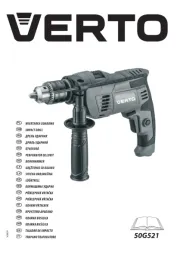
30 Juli 2025
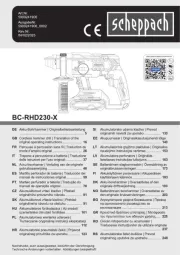
29 Juli 2025
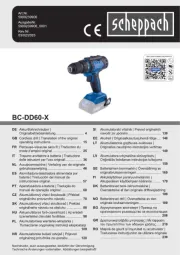
29 Juli 2025
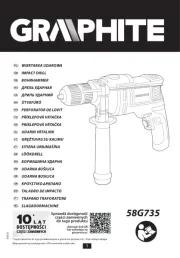
29 Juli 2025
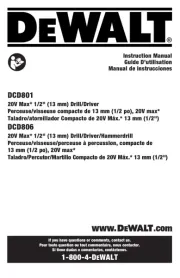
29 Juli 2025
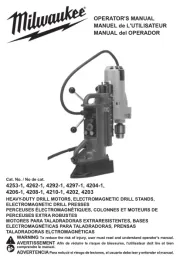
22 Juli 2025
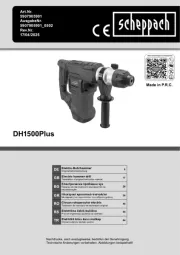
21 Juli 2025
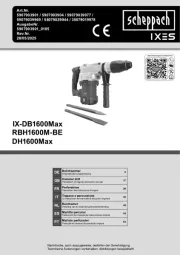
21 Juli 2025
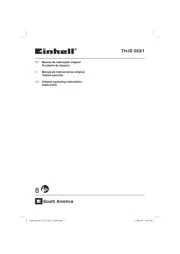
21 Juli 2025
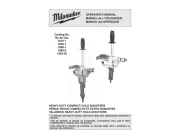
16 Juli 2025